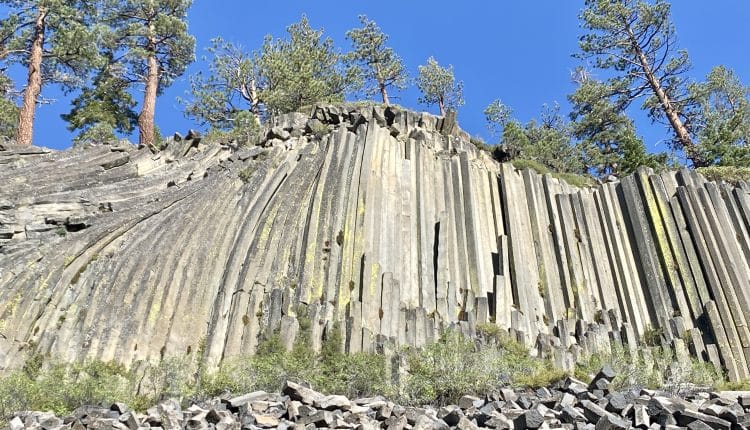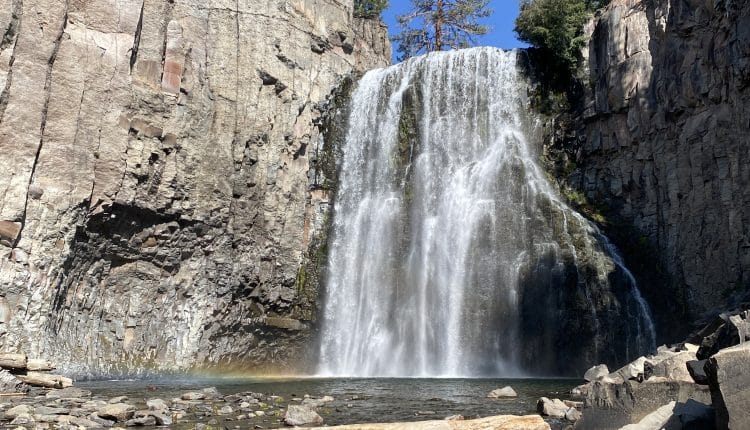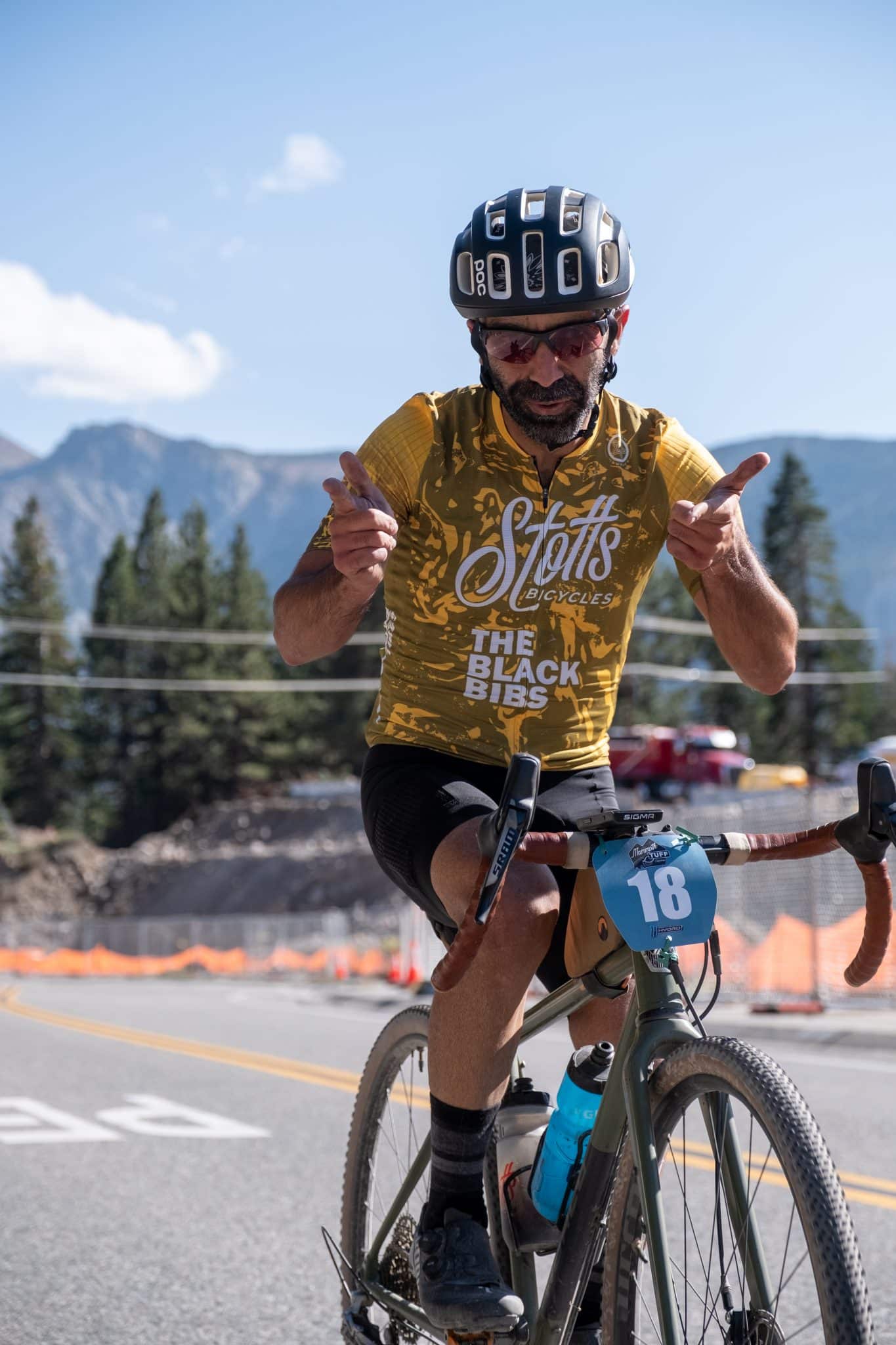MAMMOTH TUFF GRAVEL RACE: THE CHALLENGE OF THE YEAR
Real gravel and really challenging
Mammoth Tuff has been on our calendar since 2020. It was first canceled (like everything else) due to Covid but then in 2021 was once again canceled because of a National Forest closure and EMS resource constraints with Calder Fire to the north. So the 2022 event was the inaugural Mammoth Tuff, and it was worth the wait.
WHAT IS TUFF
Tuff (tŭf) is a general term for all consolidated pyroclastic, volcanic rocks.
The name, Mammoth TUFF, is a nod to the Long Valley Caldera and the volcanic stone that defines ‘gravel’ in the area. The caldera was formed about 760,000 years ago in a volcanic eruption from which the magma still underlies it, heating underground water and fueling hot springs the event will ride by.
THE COURSE OPTIONS
On paper the long and medium courses don’t look too bad but don’t let the profile mislead you. They are both challenging. The short course is also challenging and a great option for those that want to experience the terrain and event atmosphere without breaking the 50-mile mark.
The Tuff short course is around 40 miles with 2,340 feet of climbing and will circle the famous caldera.
The Tuffer medium course is 77 miles and 4,591 feet of climbing and is a mix of the short and long.
The Tuffest long course is 107 miles with 7,569 feet of elevation gain and travels through the Volcanic Tableland formed by the Long Valley Caldera.

THE EVENT VIBE
Mammoth Tuff is the week after the Mammoth Gran Fondo which for years has been one of our favorite road events of the year. This makes it a great opportunity to make a long week of riding in the Eastern Sierra. If you can’t swing a week in the mountains, it’s a hard choice but Mammoth Tuff in our opinion is a more challenging event and loads of fun. Mammoth is a cycling mecca in the summer, and the weather in September is perfect with cool mornings and mild afternoon heat. Amanda Nauman and David Sheek have truly put their heart and soul into this event and the vibe is fun and organized. We also appreciated all of the pre-ride festivities for those that come to town early.

If you are up for a Friday evening challenge, they offer the Mammoth BUFF beer run! It was entertaining and definitely something we should try next year.
THE LOCATION
Mammoth Lakes is a town in California’s Sierra Nevada mountains. It’s known for the Mammoth Mountain and June Mountain ski areas and nearby trails. The town sits at 7,881ft and is a base for the Devils Postpile National Monument, a formation of basalt columns, and the soaring Rainbow Falls. To the north, saltwater Mono Lake is dotted with limestone towers. Yosemite National Park, with its granite cliffs and ancient sequoias, is nearby.
Mammoth has loads of options when it comes to places to stay. Camping or RV sites, hotels and condos galore. Check out visitmammoth.com for more info and seasonal updates.
THE RACE
When it comes to picking which course to race, the RBA crew was split. David went all in and took on the long course. Troy evaluated his fitness and be more realistic in his goals and race the medium course. Overall both made a good choice and were challenged from being to end.
Troy has lots of experience mountain biking in the area and decided to race the Lauf Seigla gravel bike with SRAM XPLR 1x drivetrain. The unique 30mm suspension fork was the perfect choice for a course with relentless washboard from the recent rains. 45mm WTB Riddler tires were mounted to a pair of WTB CZR i23 carbon wheels.

Overall the course was fast at the beginning with a lot of fast downhill that lead to a long 13-mile gravel road across the valley. The first real climb is paved at mile 30. That is when things get tough, and you get another 10-miles of technical gravel that requires focus and constant power.
You get a little relief when you jump back onto the pavement and drop down to the first aid station at mile 47. This is also the second aid station for the long course at mile 78. This is a good place to fuel up because the hardest climb of the day (for the medium) is about to start with 4 miles and 1000ft. It is in a canyon that was over 80 degrees and the only place on the course we wished we had some wind because it was hot.

The descent off the peak was super soft and steep. It had some riders opting to run down the technical section rather than risk an over-the-bars moment, but the Lauf had us going full speed thanks to the long geometry and suspension fork. Miles 56 to 61 are back on the pavement, but at this point, the wind had picked up, and it was hitting us straight in the face.

The Hot Creek aid station was next at mile 65. You feel like you are so close to finishing, but you still have 1200ft of climbing left with a constant headwind. As you pedal the last few miles you can see town, but then the course deviates off the main road, and you get a bit more dirt as you head up. Overall the finish is not too bad, and a quick detour at the skatepark was fun. Rolling into the finish is a relief and an overwhelming feeling of accomplishment, no matter what distance you chose.
MAMMOTH TUFFEST
On the Tuffest, riders faced 106.9 miles and 7500ft of elevation gain with most of the climbing in the second half of the race. The race began with a neutral rollout from the Village to the first gravel section just east of the 395. A mile-long climb acted as a quick judge of fitness as the pack of nearly 200 riders split into pieces with the eventual finishing podium getting an early lead with chase groups sprawled out behind.
After about 10-miles of gravel, the course returned to pavement on Benton Crossing Road as it headed south towards Bishop. Riders were quick to adopt a rotating pace line and appreciate the smooth surface until they returned to gravel at mile 29.
After a few short inclines, riders began their 3300ft descent into Bishop. Expansive views of the Owens Valley and towering peaks of the Eastern Sierra distract from the bone-rattling washboard that covers most of the 25-mile downhill. What appears as a chance to relax on the course profile, was a high-intensity, high-speed drop into the valley that requires every bit of attention one can muster.
At mile 55 is the first aid station for the Tuffest course. Energetic volunteers greeted riders and delivered drop bags. Well-stocked nutrition and hydration options supplanted anyone without their own supplies. From here riders faced about 6000ft of climbing over the next 50 miles.
A false-flat greets riders as they leave the aid station. The terrain begins to transform into rollers and step-up climbs around mile 60 as riders near the marquee 10-mile ascent to the second aid station. Up the 8-percent slopes of the barren climb, the sun beat down on racers as what were groups of two-three began to separate and climb at their individual paces.
According to Strava David took about an hour and seventeen minutes to complete the climb with the leaders finishing around 54 minutes. From there the Tuffest course reconnects with the Tuffer riders for a relentless 30 miles to the finish.

TUFFEST GEAR SELECTION
We were able to get our hand’s on an unreleased frame from a certain Tennessee-based bike builder that we can’t disclose too many details about. We can say it’s an aggressive gravel race bike made out of a material other than carbon. While we couldn’t pass up the opportunity to ride this bike as it would be ideal for events like SBT GRVL and the Unbound Gravel 200, we will opt for something more compliant when we return to race Mammoth Tuff. The amount of washboard and rough sections of gravel, in general, had us wishing for a more relaxed and forgiving geometry for our pace.
43mm Panaracer Gravel Kings SS tires were a bit too narrow to meet the demands of the long course. We’d likely return with at least 45mm tires or as wide a tire as our frame will allow.
Gearing-wise David felt comfortable with Shimano GRX Di2 spec of 48/31 chainrings and an 11-34 cassette. It provided ample top-end speed for the fast parts of the course plus the climbs were manageable in the 31/34 gear.













Comments are closed.